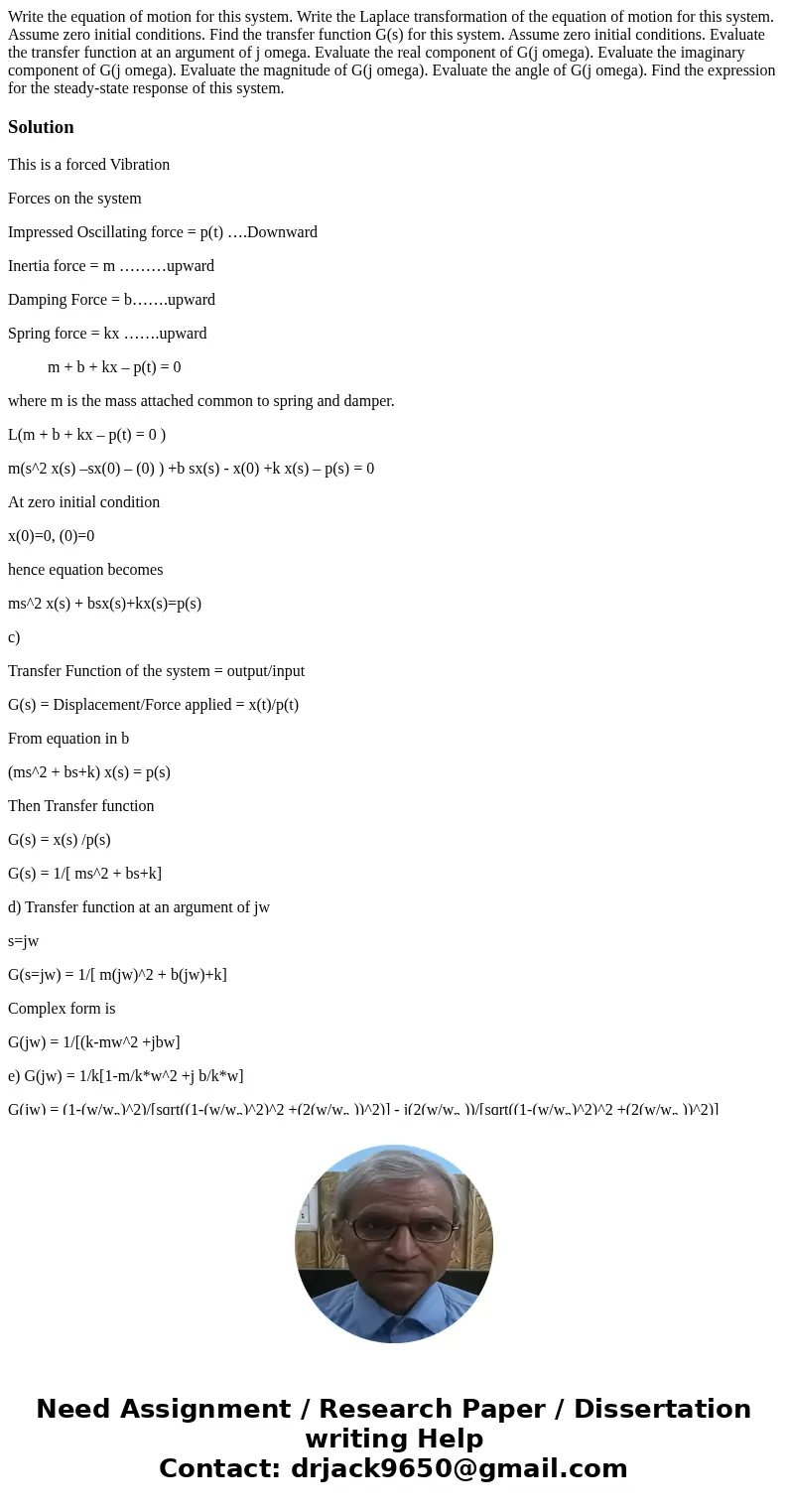Write the equation of motion for this system Write the Lapla
Solution
This is a forced Vibration
Forces on the system
Impressed Oscillating force = p(t) ….Downward
Inertia force = m ………upward
Damping Force = b…….upward
Spring force = kx …….upward
m + b + kx – p(t) = 0
where m is the mass attached common to spring and damper.
L(m + b + kx – p(t) = 0 )
m(s^2 x(s) –sx(0) – (0) ) +b sx(s) - x(0) +k x(s) – p(s) = 0
At zero initial condition
x(0)=0, (0)=0
hence equation becomes
ms^2 x(s) + bsx(s)+kx(s)=p(s)
c)
Transfer Function of the system = output/input
G(s) = Displacement/Force applied = x(t)/p(t)
From equation in b
(ms^2 + bs+k) x(s) = p(s)
Then Transfer function
G(s) = x(s) /p(s)
G(s) = 1/[ ms^2 + bs+k]
d) Transfer function at an argument of jw
s=jw
G(s=jw) = 1/[ m(jw)^2 + b(jw)+k]
Complex form is
G(jw) = 1/[(k-mw^2 +jbw]
e) G(jw) = 1/k[1-m/k*w^2 +j b/k*w]
G(jw) = (1-(w/wn)^2)/[sqrt((1-(w/wn)^2)^2 +(2(w/wn ))^2)] - j(2(w/wn ))/[sqrt((1-(w/wn)^2)^2 +(2(w/wn ))^2)]
Real Component is = (1-(w/wn)^2)/[sqrt((1-(w/wn)^2)^2 +(2(w/wn ))^2)]
f) Imaginary Component is =(2(w/wn ))/[sqrt((1-(w/wn)^2)^2 +(2(w/wn ))^2)]

 Homework Sourse
Homework Sourse